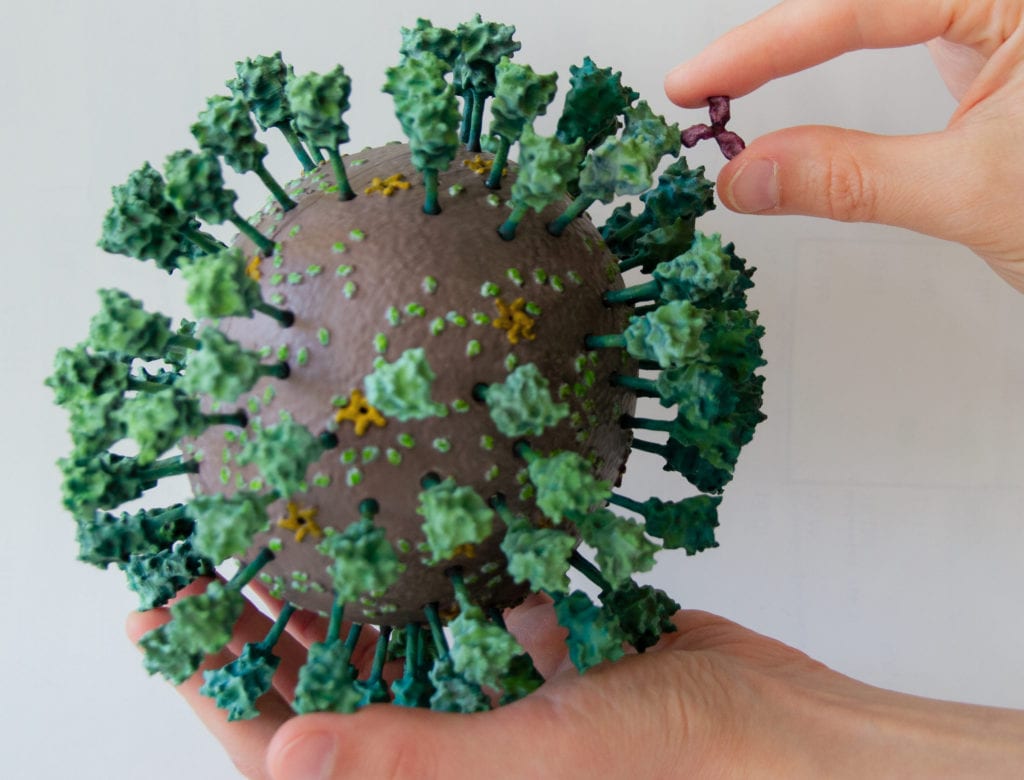
A team led by researchers at the Institute for Molecular Biotechnology (IMBA)of the Austrian Academy of Sciences in Vienna may have found a cure for corona. Two sugar-binding proteins are involved. These prevent SARS-CoV-2 variants from penetrating cells, according to the IMBA’s press release on the potential new therapy.
The interaction of the SARS-CoV-2 S protein with host cell enzyme 2 (ACE2) is critical in determining the infectiousness of the virus. In order to be able to survive and spread, the virus needs a camouflage mechanism to hide from the host’s immune response. To do that, it uses a so-called glycosylation mechanism. It forms a sugar coating at specific locations on the S protein. For team leader Josef Penninger, one question immediately came to mind: ‘What about lectins, the sugar-binding proteins?’
Achilles’ heel
“We intuitively came up with the idea that lectins could help us find new interactive partners of the spike protein,” says co-author David Hoffmann. In all the circulating variants, the glycosylation locations of the SARS-CoV-2 spike protein have become highly conserved. By identifying lectins that bind to these glycosylation sites, researchers may be well on their way to developing potent remedies against corona. The team developed and tested a library of more than 140 mammalian lectins. Of these, two were found to bind strongly to the SARS-CoV-2 S protein: Clec4g and CD209c.
“We now have in our hands tools that can bind to that protective layer of the virus and consequently prevent it from invading cells,” summarizes Stefan Mereiter, postdoctoral researcher at the Penninger lab. Mereiter: “This mechanism could be precisely the Achilles’ heel that science has been waiting for.”
Extremely promising
The team discovered that these two lectins bind to the N-glycan site (N343) of the S protein. This particular site is so crucial to the spike that it cannot be absent in any infectious variant. Disabling this glycosylation site renders the S protein unstable. Moreover, other groups have shown that viruses with mutated N343 are not infectious.
“This means that our lectins bind to a glycan site that is essential for the function of the spike. It is therefore highly unlikely that a mutant could ever emerge that lacks this glycan,” Mereiter explains. In addition, the two lectins also reduce SARS-CoV-2 infectivity in human lung cells.
Drug candidate
For Josef Penninger and the entire team, these results are extremely promising for variant therapeutic interventions against SARS-CoV-2. Penninger: “The approach is similar to the mechanism of the drug candidate ‘APN01‘ (Apeiron Biologics), which is currently undergoing advanced clinical trials. This makes use of a biotechnically-produced human ACE2 that also binds to the spike protein. When the S protein is taken over by the drug, access to the cell is blocked. We have now identified naturally occurring mammalian lectins that can do exactly that.”
The results of the study have been published in the renowned EMBO Journal.
Also interesting: Nanobodies stop Sars-CoV-2 and its new variants







